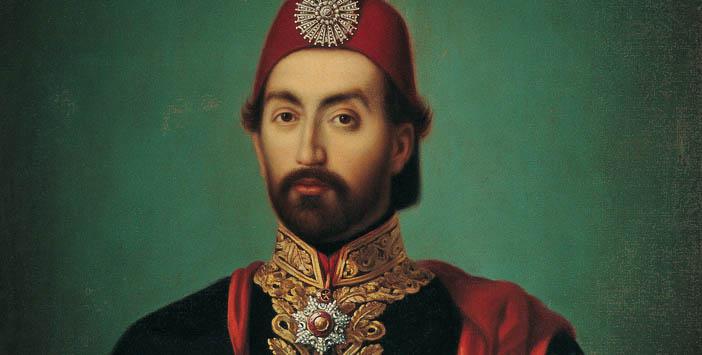One of the milestones of the Ottoman modernization process is one of the sultans: Who is Abdülmecid?
Abdülmecid gave equal rights to all Muslim and non-Muslim peoples within the borders of the empire with the edict that opened a new era called Tanzimat.

(1823-1861) Ottoman sultan. He made various innovations during his reign and declared the Tanzimat Ferman. He was born on April 25, 1823, in Istanbul. He died in the same place on June 25, 1861. He is the son of Mahmud II. He was educated at the palace. He became sultan in July 1839 upon the death of his father. Shortly before Abdülmecid's accession to the throne, the Ottoman army was defeated by the forces of Kavalalı Mehmed Ali Pasha in Nizip. Immediately after, Captain-i Derya Hain Ahmed Pasha kidnapped the Ottoman navy and handed it over to the Egyptian Governor, Mehmed Ali Pasha. Abdülmecid initiated a series of innovations in order to gain the support of the people and European states on these defeats and losses. He published Gülhane Hatt-ı Hümayunu in November 1839 with the suggestions of the Minister of Foreign Affairs, Mustafa Reşid Pasha, who had just returned from Europe at that time. With this edict, which opened a new era known as the Tanzimat, Abdülmecid promised that all Muslim and non-Muslim peoples within the borders of the empire would be granted equal rights, their property, life, and beliefs would be safe, and tax and military obligations would be regulated. He said that these issues would be secured by the laws to be enacted and that he would be responsible for the implementation of the laws.
In November 1840, it was decided that the governorship of Egypt would be handed over to Mehmed Ali Pasha on condition that it would pass from father to son, and Syria would be returned to the Ottoman Empire in return.
Then, in July 1841, the Treaty of London was signed, which resolved the straits problem. With this treaty, the Ottoman Empire's sovereignty over the straits was re-determined and it was accepted that foreign warships could not pass through the straits. During the peace period that followed this treaty, Abdülmecid tried to realize the innovation movements. Later, with the effect of the French Revolution of 1848, uprisings broke out in the Balkans. The Hungarians, who entered the struggle for independence against Austria, took refuge in the Ottoman Empire when they were defeated by the Austrian army, which was also helped by the Russians. Then the Romanians in Wallachia and Moldavia revolted. The Ottomans and Russians sent forces to suppress this uprising. With the Baltalimanı Treaty signed in May 1849, they decided to take a joint stance and resolved the problem temporarily.
After a while, the desire to protect Catholics living in and around Jerusalem, which is considered holy by Christians, by the French and the Orthodox by the Russians, caused the relations to deteriorate again. Basing this initiative on the Treaty of Küçük Kaynarca, when Russia invaded Wallachia and Moldavia, the Ottoman Empire declared war on Russia in 1853, and foreign borrowing was applied for the first time in 1854 to cover war expenses. The Ottoman Empire emerged victorious from the war with the help of the kingdoms of England, France, Piedmont, and Sardinia. On the other hand, with the Reform Edict declared in February 1856, he fulfilled the wishes of the European states. According to this edict, the non-Muslim people's admission to civil service and military service was rearranged, and they were exempted from various taxes.
Immediately after the Reform Edict, in accordance with the treaty made in Paris in March 1856, the independence and integrity of the Ottoman Empire were preserved and it had equal rights with the European states. Abdülmecid, following the Paris Agreement, turned to internal regulations again during the peace period. However, these innovations could not be assimilated into the Ottoman Empire, which included economically and culturally diverse communities, and after a while, reactions began. The events that broke out in Jeddah in July 1858 were followed by the Druze-Maronite conflicts in Syria in 1860. Thereupon, the landing of troops in Beirut by France expanded the dimensions of the event and Lebanon became a privileged sanjak in June 1848. Meanwhile, uprisings broke out again in Wallachia, Moldavia, and Montenegro. In the last period of Abdülmecid's reign, the increase in expenditures and the accumulation of foreign debts also caused reactions. These reactions gradually turned into events such as the Kuleli Incident aimed at overthrowing the government. Abdülmecid died in Istanbul on June 25, 1861, at a time when the events were so intense.
During the reign of Abdülmecid, many innovations were made in almost every field. Rüşdıye schools (secondary schools) were opened in 1839, the first penal code was prepared in 1840, trade councils were established, a midwife school was opened in 1842, and temporary military service was introduced in 1843 instead of life-long military service in 1846. The assembly was transformed into a settled institution, the first high school (high school), darülmuallimin (teacher school), and Agricultural School were opened, and mixed commercial courts were established. In 1850, murder courts were established, the commercial law was published. Encümen-ı Danış (Sciences Academy) was founded in 1845. In 1857, the new land law was published, and the state's income and expenses were tied to a budget. In 1858, secondary schools for girls were opened, and the Forest and Maadin School was established. In 1859, the Civil Service School was opened. The Telegraph School was established in 1860.
